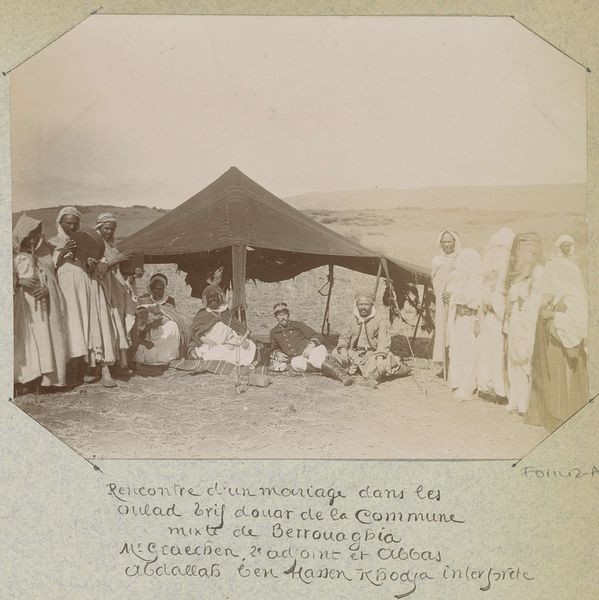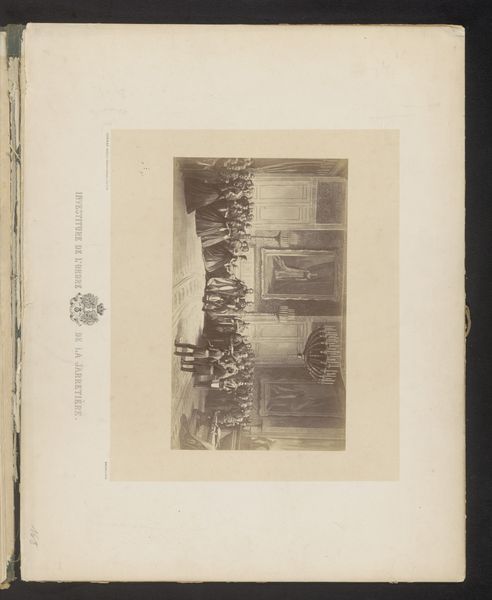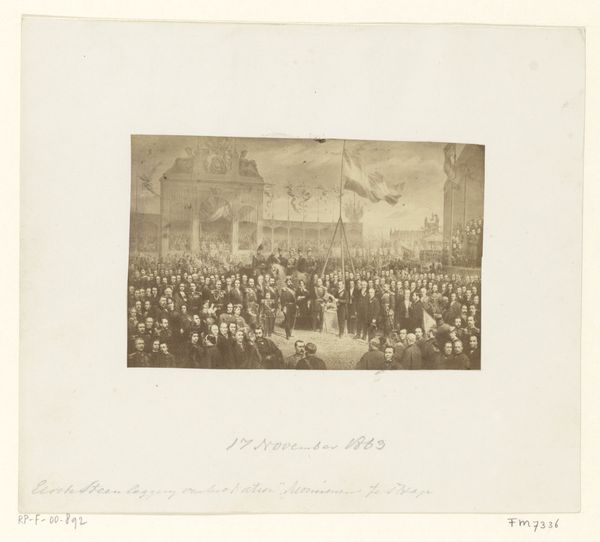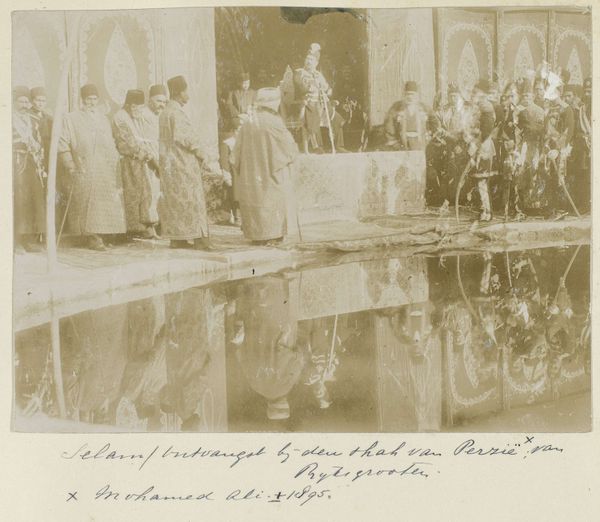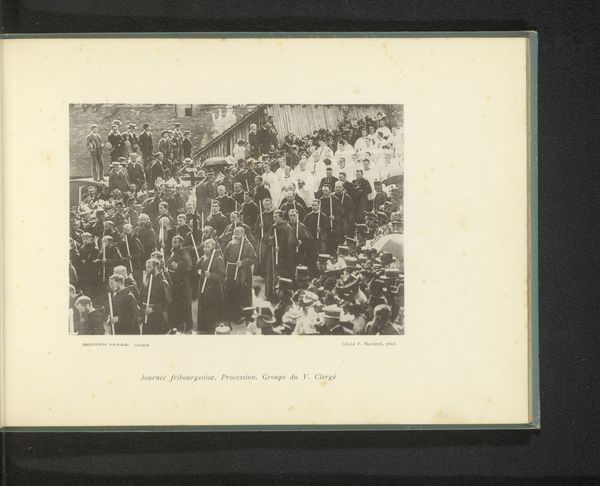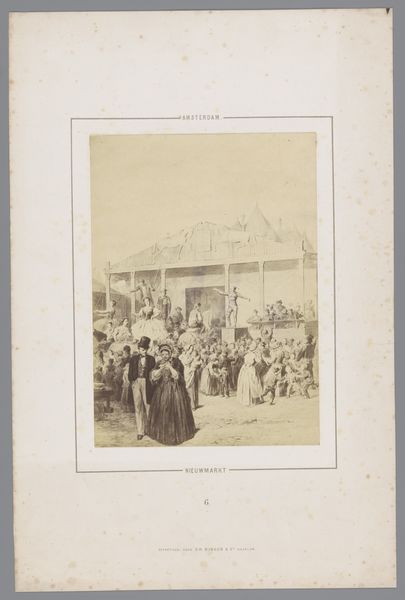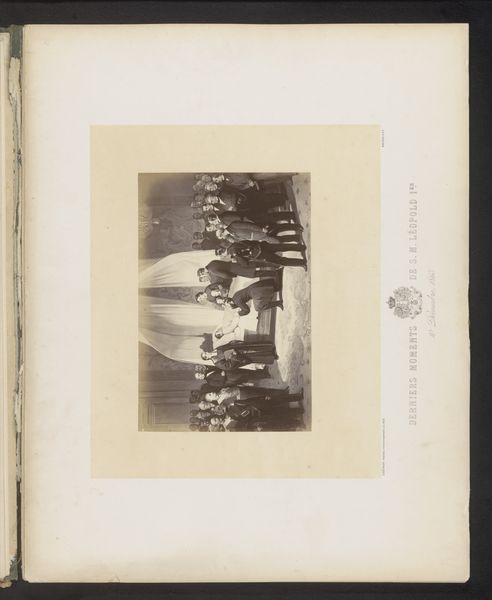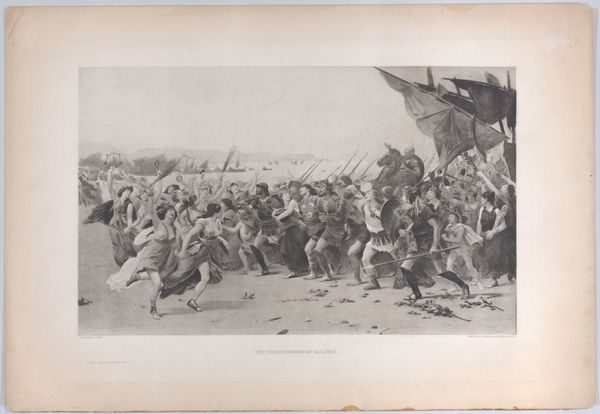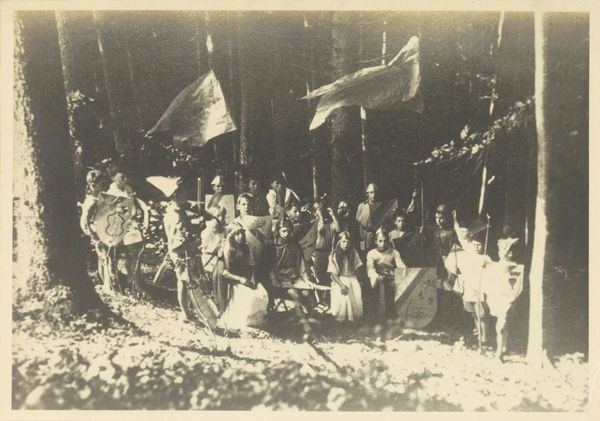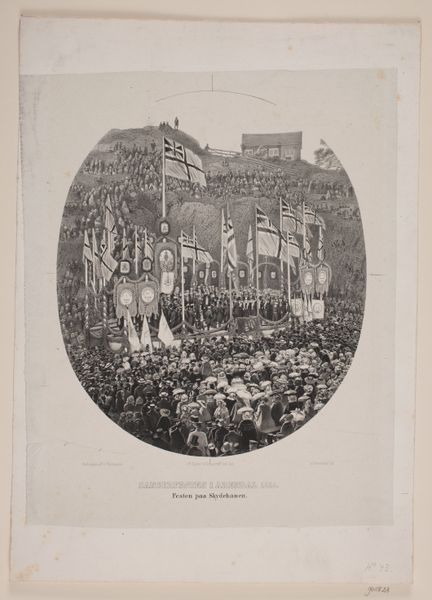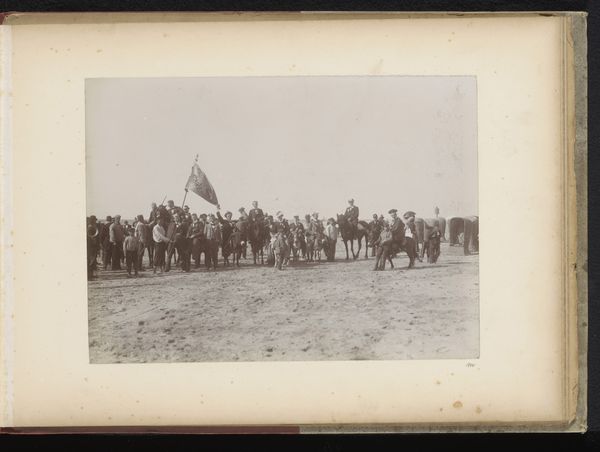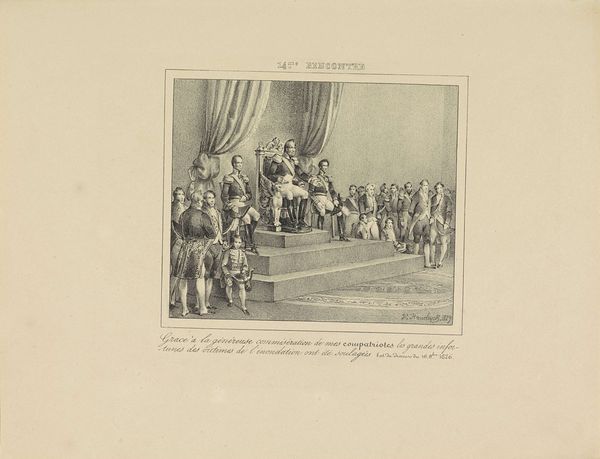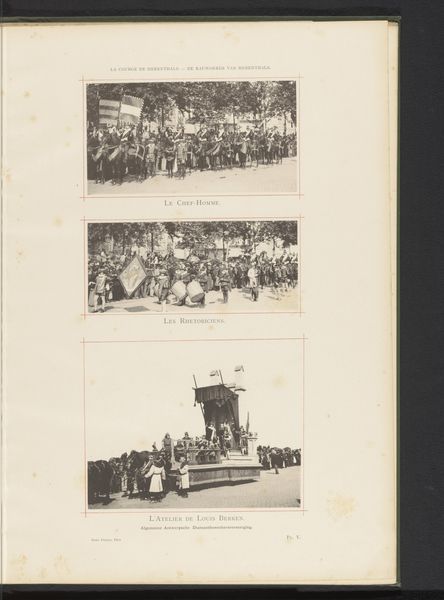
Presentatie van de vlaggen van de profeet tijdens het 'Fête du Marabout' bij Chorfa (Algerije) Possibly 1895
0:00
0:00
photography, gelatin-silver-print
#
portrait
#
photography
#
gelatin-silver-print
#
islamic-art
Dimensions: height 112 mm, width 156 mm
Copyright: Rijks Museum: Open Domain
Curator: This gelatin-silver print, possibly from 1895, captures "The Presentation of the Flags of the Prophet during the ‘Fête du Marabout’ near Chorfa, Algeria." It’s attributed to a photographer named Marotte. Editor: It's such a faded image, almost dreamlike. The eye is drawn to these figures shrouded in white robes, gathered beneath those huge flags. It feels... solemn, communal. Curator: Indeed. Gelatin-silver printing allowed for mass reproduction, meaning images like these had a particular power to circulate ideas and influence public perceptions of Algeria, especially within the context of French colonialism. It would have reached audiences in Europe with a constructed view of this event. Editor: Absolutely, the material itself has a history, shaped by political economies. What were they hoping to portray to that French audience? You see the detail given to those front figures, clearly positioned. There's labor visible in the making of the cloth for the garments, for the flags—but what’s missing? The voices, the sounds, the very spirit. What fabrics are these flags even made from? Who was doing the weaving? Curator: Good questions! Contextualizing this image is crucial. It documents a religious festival, but its production also speaks to colonial dynamics and how Islamic culture was visualized for European audiences. How the public imagined these festivities relied on prints like these circulating as souvenirs in postcards. This served particular administrative purposes at the time. Editor: Right, because even the photographic process itself becomes a tool, obscuring and revealing simultaneously. These events served not only spiritual purposes, but likely had great significance in uniting, resisting, and carrying on traditions, no matter how faded. Curator: Exactly. And our perspective today lets us acknowledge those omissions, understand the image within broader systems of power. Editor: Thinking about it now, its muted tones resonate with resilience, as if those obscured faces have quietly defied every act of colonial gaze—each imperfection hinting at complexities impossible for the image to contain.
Comments
No comments
Be the first to comment and join the conversation on the ultimate creative platform.
